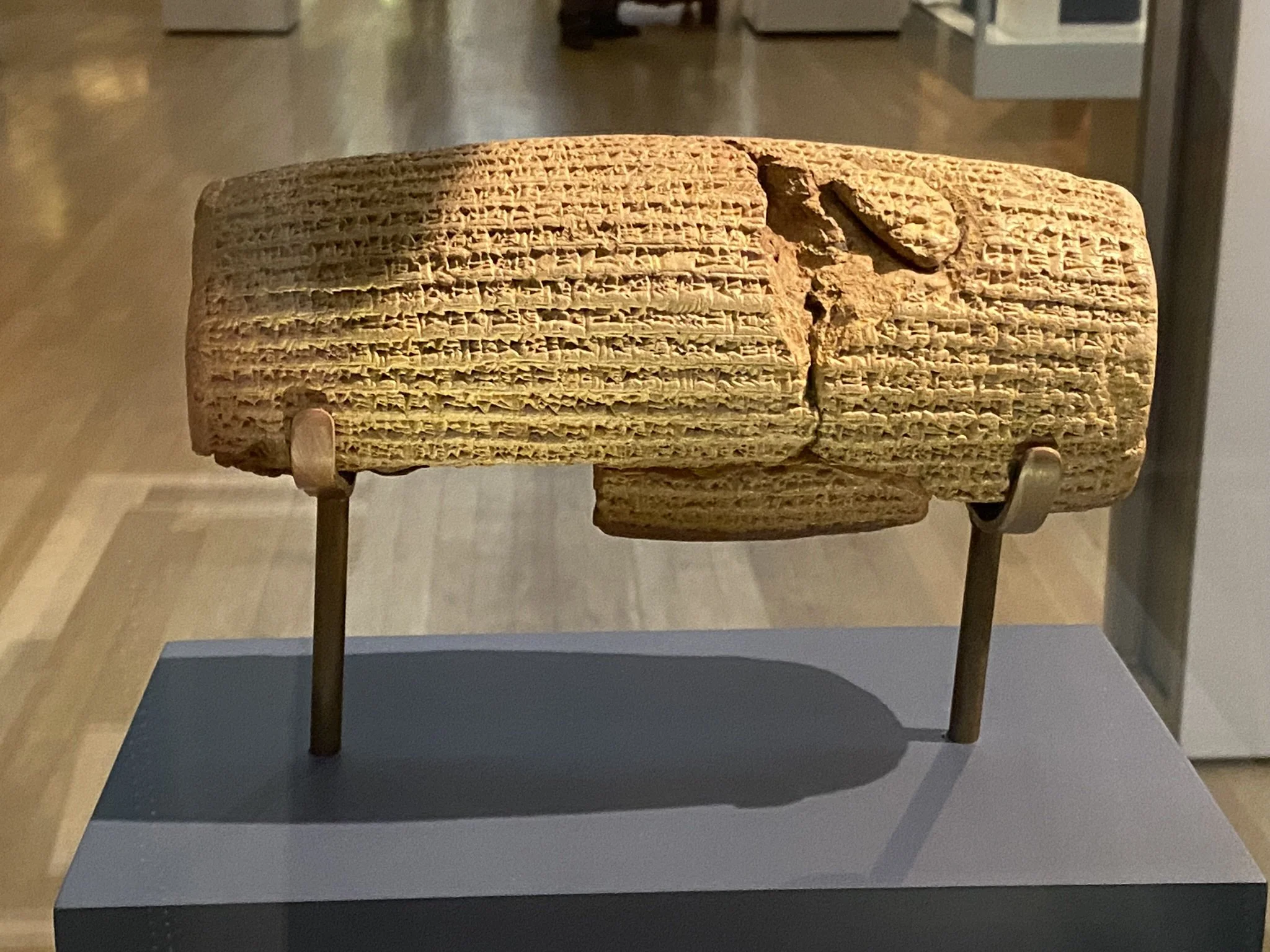The Cyrus Cylinder in the British Museum
Type: Replica of the Cyrus Cylinder
Original was created around: 558-530 BCE
Culture: Persian
This clay cylinder is inscribed in Akkadian cuneiform script with an account made by the famous king, Cyrus of Persia (558-530). The Cyrus Cylinder records his conquest of Babylon in 539 BC and the capture of Nabonidus, the last of the Babylonian kings.
The Cyrus Cylinder is an important discovery in the study of Biblical Archaeology because it speaks of Cyrus the Persian and his conquest of Babylon in 539 BC as mentioned in Scripture (see below).
Cyrus II, the Great, was the founder and ruler of the vast Persian Empire from 539 BC until his death in 530 BC. Once Cyrus defeated the Median king, Astyages, and took Ecbatana, he expanded his kingdom by defeating Croesus, king of Lydia in 546 BC, and then conquered Babylon in 539 BC, overthrowing the sitting king Belshazzar, son of the Nabonidus, who was directing a war in a distant country.
The historian Xenophon, the former king Nabonidus, and many others gave Cyrus praise for his generous leadership. In his generosity, Cyrus allowed various captives to return to their homelands, as recorded on the Cyrus Cylinder and prophesied 150 years prior by Isaiah the prophet.
“Who says of Cyrus, ‘He is My shepherd, and he shall perform all my pleasure, saying to Jerusalem “You shall be built,” and to the temple, “Your foundation shall be laid,” Isaiah 44:28.
Ezra wrote:
“King Cyrus also brought out the articles of the house of the Lord, which Nebuchadnezzar had taken from Jerusalem and put in the temple of his gods; and Cyrus king of Persia brought them out by the hand of Mithredath the Treasurer, and counted them out to Sheshbazzar the prince of Judah. This is the number of them: thirty gold platters, one thousand silver platters, twenty-nine knives, thirty gold basins, four hundred and ten silver basins of a similar kind, and one thousand other articles. All articles of gold and silver were five thousand four hundred. All these Sheshbazzar took with the captives who were brought from Babylon to Jerusalem,” Ezra 1:7-11
About the night of the Persian conquest, Daniel wrote:
“King Belshazzar gave a great banquet for a thousand of his nobles and drank wine with them. While Belshazzar was drinking his wine, he gave orders to bring in the gold and silver goblets that Nebuchadnezzar his father had taken from the temple in Jerusalem, so that the king and his nobles, his wives and his concubines might drink from them. So they brought in the gold goblets that had been taken from the temple of God in Jerusalem, and the king and his nobles, his wives and his concubines drank from them. As they drank the wine, they praised the gods of gold and silver, of bronze, iron, wood and stone.
Suddenly the fingers of a human hand appeared and wrote on the plaster of the wall, near the lampstand in the royal palace. The king watched the hand as it wrote. His face turned pale and he was so frightened that his legs became weak and his knees were knocking.” Daniel 5:1-6
The Historian Xenophon wrote about the night that Babylon was captured by the Persians:
“The trenches had already been dug. Since Cyrus heard that there was a festival in Babylon in which all the Babylonians drank and reveled the entire night, on this night, as soon as it was dark, he took many people and opened the mouths of the trenches toward the river… [Cyrus said], “Men, friends, the river has yielded us the road to the city. Let us enter with confidence, fearing nothing within, bearing in mind that the troops against whom we are now marching are the very ones we conquered when they had allies in addition to themselves, were all wide awake, sober, armed, and organized. Now we are going against them at a time when many of them are asleep, many are drunk, and all are disorganized.”

